
04-04-2014 09:41
Garcia SusanaHi allI found this Pyrenomycete but I am unable to

04-04-2014 16:58
Does anyone have this paper on Apiognomonia? Sogo

03-04-2014 11:50
 Alan Rockefeller
Alan Rockefeller
I found this little asco on hardwood in a cloud fo

31-03-2014 00:10
Mario FilippaMarch 9, 2014 - Rocchetta Tanaro, Asti, ItalyIn a

01-04-2014 14:47
Found 01-04-14, under of mosses, in Cistus monspel

02-04-2014 13:26
Gernot FriebesHi,I haven't been able to find a name for this col
I found this Pyrenomycete but I am unable to identify.
It has characteristics spores. They have what looks like a central septum with 6 germinal pores.
I think it can be near Amphisphaeria.
Can anyone help me to identify it?
Thank you, greetings
Susana

Did you mount your fungus also in water?

very interesting, I guess this belongs to Amphisphaerella. I think it should be compared with A. amphisphaerioides, which has no septum, but 3 aequitorial germ pores and a spore size similar to your one. A. deceptiva comes also close, with somewhat bigger spores but a refractive, J+ apical ring.
I would like to study your specimen, is it possible that you send a sample of it?
regards,
björn
I did not know the Amphisphaerella genre, which I now see has characteristic equatorial pores.
I think it could be Amphisphaerella xylostei, because I feel that the substrate can be Lonicera since in the same grew a species apotecioide that I think is Trichopezizella barbata which is also typical of Lonicera, so I've read.
I can't see the spores for this species. But, you think that it is Trichopezizella barbata? (I send a photo).
Photos of the spores are made in water, I send more photo in water for see the apical ascas and paraphisis
Björn, there is little sample, but I will try to send enough for you to study.
Are you information to genre Amphisphaerella?
Regards,
Susana

You do not need to send the material, but if you want that I take a look on it, you always can ;)
About literature:
1 Eriksson, O. (1966). On Anthostomella Sacc., Entosordaria (Sacc.) Höhn. and some related genera (pyrenomycetes). Svensk Botanisk Tidskrift 60: 315-324
2 Kirschstein, W. (1934). Remarks on a collection of British species of Rosellinia and a redistribution of the species of that genus, Trans. Br. mycol. Soc. 18(4), p. 302-307.
3 Wang, Aptroot & Hyde (2004). Revision of the Ascomycete genus Amphisphaeria. Fungal Diversity Research Series 13.
4 Vassiljeva (1998). Nizshie Rasteniya, Griby i Mokhoobraznye Dalnego Vostoka Rossii, Griby. Tom 4. Pirenomitsety i Lokuloaskomitsety (Sankt-Peterburg)
5 Barr (1994). Notes on Amphisphaeriaceae, Mycotaxon 51, p. 191-224.
I would be interested in the first one, because I do not have this and it seems as if the older papers from Svensk Bot. Tidskr. aren't available online.
regards,
björn
Is possible you send me article:
Wang, Aptroot & Hyde (2004). Revision of the Ascomycete genus Amphisphaeria. Fungal Diversity Research Series 13.
Does anyone available in pdf this other article:
FUNGI FROM PALMS .17. THE GENUS FASCIATISPORA, WITH NOTES ON AMPHISPHAERELLA. HYDE, KD. Nova Hedwigia 61 (1) 249-268
Thanks, regards
Susana
danke für die Literaturstellen.
Herzliche Grüße.
Peter Püwert.
I can send you a scan of Eriksson at some point during the next week (assuming no one's faster).
If anyone has one of the following publications I too would be grateful to receive them:
Vassiljeva (1998). Nizshie Rasteniya, Griby i Mokhoobraznye Dalnego Vostoka Rossii, Griby. Tom 4. Pirenomitsety i Lokuloaskomitsety (Sankt-Peterburg)
Wang, Aptroot & Hyde (2004). Revision of the Ascomycete genus Amphisphaeria. Fungal Diversity Research Series 13.
Hyde (1995). FUNGI FROM PALMS .17. THE GENUS FASCIATISPORA, WITH NOTES ON AMPHISPHAERELLA. Nova Hedwigia 61 (1) 249-268
Best wishes,
Gernot

there are variations in reaction to iodine among collections on Lonicera and ascospores are so variable in shape and dimensions that it is difficult to know whether one or two or more species are involved.
I attach the Eriksson's paper.
Wang et al is a book!
Jacques

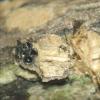
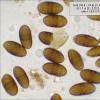
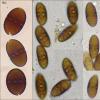
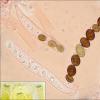
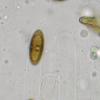

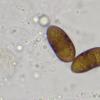
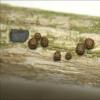
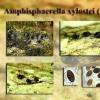
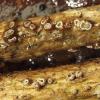
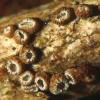
 Eriksson-On-Anthostomella-Sacc.-Entosordaria-Sacc.-Hohn.-and-some-related-genera-Pyrenomycetes-0001.pdf
Eriksson-On-Anthostomella-Sacc.-Entosordaria-Sacc.-Hohn.-and-some-related-genera-Pyrenomycetes-0001.pdf